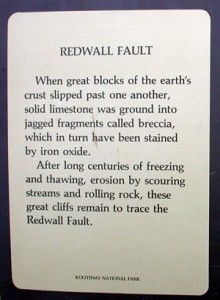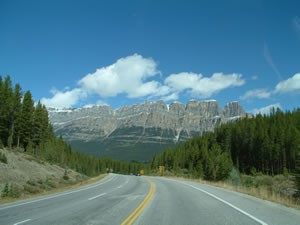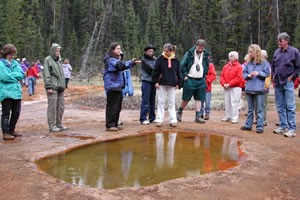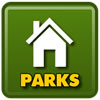Kootenay National Park
Covering 1,406 sq km (543 sq mi) in the southwest region of the Canadian Rocky Mountains, Kootenay National Park is famous for its diversity of landscapes, ecology and climate. Glacier mountain peaks along the Continental Divide give way to semi-arid grasslands and everything in between, and are home to abundant flora and fauna typical to alpine, sub-alpine and montane ecological zones.
History

What we know today as Kootenay National Park was originally part of the traditional lands of the Ktunaxa and Kinbasket First Nations people and used by them as seasonal hunting grounds. The land was established in 1920 as part of an agreement between the Province of British Columbia and the federal government, to build the Banff-Windermere Highway, the first motor road across the Canadian Rockies. A strip of land 5 miles wide (8 km) on each side of the highway was designated as a national park, expanding motor tourism and establishing a commercial link between the Columbia Valley and Calgary, AB.

Wildlife
Grizzly and black bears, elk, moose, coyote, cougar, lynx, wolverine, marten, white-tail and mule deer, mountain goats, Rocky Mountain bighorn sheep and wolves abound in the park. Visitors will often see the animals grazing by the roadsides, especially at dawn or dusk.
The scenic drive
Kootenay National Park begins at the Great Divide on the 94 km drive from Alberta to British Columbia along Hwy 93 South. The Great Divide is the continental spine of western North America. This spot separates two watersheds, two provinces and two national parks. If you stop and get out of the car, you can stand in two provinces at the same time!

The drive offers visitors magnificent vistas of glacier-topped mountains, sparkling rivers and lakes, narrow gorges and deep canyons. Vibrant new forests can be seen in places where fires have destroyed the old growth.
Ecosystem
The fragile ecosystem in the park is constantly threatened by human impact. There are ever-present dangers such as fire suppression, development, introduction of non-native plants, habitat fragmentation and human/animal conflicts like collisions with animals on the highway. There is a need for all of us to carefully guard this precious natural treasure.
Kootenay National Park’s wildlife symbol is the mountain goat and a large population of the animals inhabit the slopes of Mount Wardle all year long.
Things to do

Whatever the season, there is always an abundance of adventures to be had in Kootenay National Park.
In summer, you can enjoy backpacking, hiking, camping, mountaineering, boating, canoeing, picnicking, guided and self-guided tours and various interpretive programs which offer all ages fun and educational experiences.
In winter, ice climbing, hiking, snowshoeing and cross-country skiing provide plenty of opportunities to get out in the pristine beauty of the park, breathe the fresh, crisp mountain air and make great memories.
For more information about Kootenay National Park, click here. Visit Kootenay National Park’s Facebook page here.
10 Adventures has more information about Kootenay National Park.

